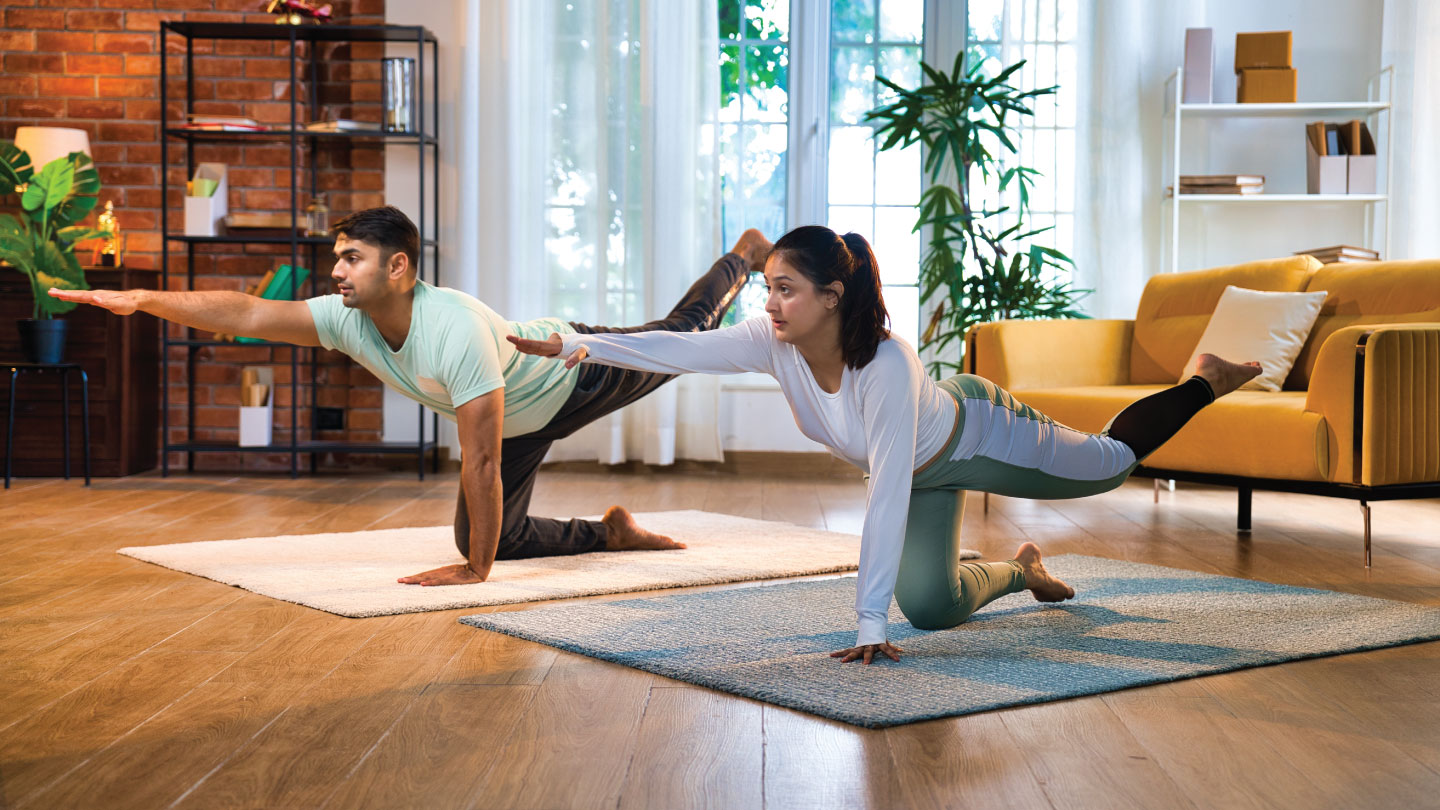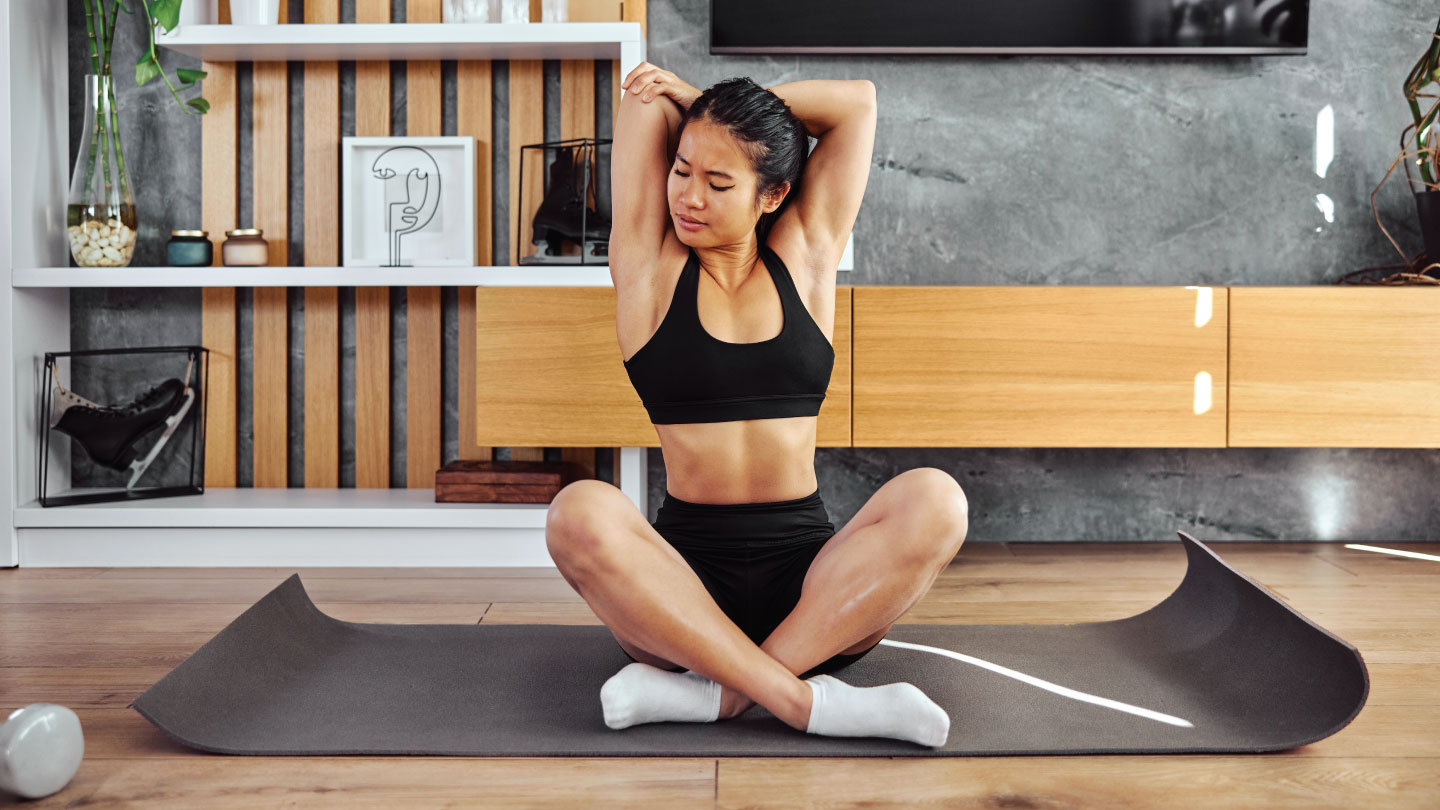Movement
Tips From UR.Life LMPT Expert For A Healthier Spine
How often do you think about your spine health? Believe it or not, there are many things you can do to keep your spine in optimal shape. Keep your spine healthier with these tips from UR.Life physiotherapist.

According to a 2024 study published in the Indian Journal of Anaesthesia, 66 per cent of Indians experience lower back pain at some point in their lives. That’s two out of three people dealing with back aches and discomfort when they shouldn’t be feeling any at all.
Our spine is truly a remarkable component of human biology. Its elegant S-shaped structure, with three natural curves, makes it a marvel to behold. Divided into the cervical (neck), thoracic (upper back), and lumbar (lower back) sections, this column of 33 bones, known as vertebrae, not only protects the spinal cord but also enables a wide range of movements. These bones are interconnected by tough connective tissue and cushioned by cartilage, while a complex network of muscles, ligaments, and tendons provides additional support and stability.
Unlock insider access to the best movement plans for free! Sign up today.
The tissues supporting the spine are nothing short of amazing. Facet joints allow us to twist, bend, and carry heavy loads, while protecting against strains and overuse. The intervertebral discs, nestled between each vertebra, act as our body’s natural shock absorbers—making running, jumping, and even dancing feel effortless.
Related story: Better Posture, Better Back: Yoga For A Healthy Spine
Tips For A Healthier Spine
We approached Dr. Vinay Aindala, a physiotherapist at UR.Life, to discuss spine health. According to Dr. Aindala, our daily habits can significantly impact the health of our spine. If we neglect this, it can lead to serious health issues that disrupt our daily lives. He stresses the importance of prioritising postural education and adopting a healthy lifestyle. Dr. Aindala also highlights the increasing significance of keeping our spines strong and resilient as we get older.
Wondering how you can start taking better care of your spine today? Here are our top 10 tips to keep your spine strong and healthy:
1. Use a firm mattress to sleep
A good night's sleep plays a crucial role in spine health, and the type of mattress you use can make all the difference. A firm mattress provides the right level of support to keep your spine aligned while you sleep, ensuring that the natural curves of your spine are maintained. When your mattress is too soft, it can cause your spine to sag or sink into unnatural positions, leading to back pain and discomfort. By using a firm or medium-firm mattress, you create a stable surface that helps your spine stay strong, reduces pressure on the joints, and supports restful sleep.
Related story: 6 Moves to Ease Back Pain
2. Maintain a good and erect posture
Posture is everything when it comes to spine health. Whether you're sitting at your desk, driving, or standing in line, keeping your back straight and shoulders relaxed helps distribute your body weight evenly across the spine. Slouching or hunching forward puts extra strain on the vertebrae and muscles, which can lead to chronic back pain, spinal misalignment, and even headaches. Make a habit of checking in with your posture throughout the day: keep your feet flat on the floor when sitting, your back straight, and your head level to avoid straining your neck.
3. Wear shoes with comfortable soles
Your choice of footwear affects your spine more than you might realise. Shoes that offer proper arch support and cushioning help align your feet with your legs, hips, and spine. When your boots lack support or are worn out, they can cause your foot positioning to shift, leading to misalignment that travels up through the knees and hips, ultimately straining the spine. Opt for shoes with comfortable soles that provide shock absorption and avoid wearing high heels for prolonged periods, as they can tilt your pelvis forward and stress your lower back.
Related story: 10 Minutes Yoga Asanas For Back Pain
4. Exercise your core
A strong core is vital for a healthy spine. Your abdominal and back muscles work together to support the spine, reducing the strain on it as you move, bend, or lift. By incorporating exercises like planks, bridges, or leg raises into your routine, you can strengthen the muscles that surround and stabilise your spine. A well-conditioned core not only helps prevent back pain but also improves posture, making everyday activities easier and safer. Aim for at least two to three core-focused workouts a week to keep those muscles engaged and your spine supported.
5. Lift heavy objects properly
Improper lifting techniques are a common cause of back injuries. When lifting heavy objects, always bend at your knees—not your waist—and keep the item close to your body. This allows your leg muscles, rather than your back muscles, to bear the load. Also, avoid twisting your body while lifting; instead, pivot with your feet if you need to change direction. If an object feels too heavy to lift on your own, don’t hesitate to ask for help. Using the right lifting techniques can save your spine from unnecessary wear and tear and prevent muscle strains.
Related story: Rehabilitation Therapies At UR.Life To Ease Lower Back Pain
6. Use a stool when reaching overhead
If you need to grab something from a high shelf, using a stool or ladder is much safer than stretching beyond your reach. Overreaching can strain the mid-back, neck, and shoulders, leading to pain or muscle injury. By standing on a stable surface, you can bring the object closer to your centre of gravity, allowing you to lift it safely and avoid awkward bending or twisting motions. This simple step can go a long way in preventing back and neck discomfort.
7. Use cushion support when sitting
When sitting for long periods, use a cushion or lumbar support pillow to maintain the natural curve of your lower back. This helps prevent slouching and reduces pressure on the lumbar spine, supporting better posture. Choose a chair with good back support and make sure your feet are flat on the floor.
Related story: 5 Mobility Exercises To Improve Upper Back Pain
8. Stand with one foot resting on a step
If you have to stand for extended periods, resting one foot on a small step or a low stool can help relieve pressure on the lower back. Alternate feet regularly to distribute the strain evenly and reduce tension in the spine. This simple adjustment encourages better posture and reduces fatigue in the back muscles.
9. Avoid activities that cause pain
If any activity, movement, or position is causing pain, it's best to stop immediately. Ignoring pain signals can worsen the problem or lead to injury. Listen to your body and rest when needed, especially if you’re dealing with a flare-up or chronic back condition. It's important to identify the activities that trigger pain and find alternative ways to perform them.
Related story: 3 Stretches For People Who Have Desk Job
Taking care of your spine is essential for maintaining a healthy, active lifestyle. By following these precautionary measures and incorporating supportive habits into your daily routine, you can protect your back from unnecessary strain and reduce the risk of injury. Even small adjustments—like using proper posture, lifting techniques, and supportive footwear—can make a big difference in keeping your spine strong and pain-free. Prioritise spine health now, and you'll thank yourself later for the lasting comfort and mobility it brings.
Unlock insider access to the best movement plans for free! Sign up today.
UR Life Studio offers the following programs under its Lifestyle Management and Therapeutic Programs (LMTP) unit:
- Cardiac Rehabilitation
- Pulmonary Rehabilitation
- Neuro Rehabilitation
- Ortho Rehabilitation
- Paediatric Rehabilitation
- Geriatric Rehabilitation
- Obesity Management
- Diabetes management
The following are the USPs of LMTP:
- Holistic Rehabilitation Approach: involves the medical, physical, and mental aspects of overall health
- Telemetry Supervised Rehabilitation: a state-of-the-art technique to provide optimal health care
- Hydrotherapy
- Six Minutes Walk Test
- Hydraulics (circuit training studio)
- VO2 max testing (equipment under servicing)
- Myo motion analysis (equipment under servicing)
- Detailed Physical Assessment
- Wellbeing Counselling
- Diet Counselling
EXPLORE MORE
A home-based yoga routine can elevate energy, sharpen focus, and nurture mental calm. Discover why it’s worth starting now.
Your posture is whispering a story about stress, screens, and slouching. Here are 6 exercises you must try!
In a world addicted to speed, Shavasana is proof that true regulation begins when you slow down. Discover how this humble pose is the simplest solution to the chaos within you!
When your thoughts won’t slow down, these yoga poses teach your body to stay present in the moment.








.jpg)
.jpg)
